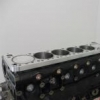General Turbo Response Question, Guru Input Needed.
Announcements
-
Similar Content
-
Latest Posts
-
I buy my wheel cleaner in 4 litre bottles now. Euro brakes are brutal
-
By soviet_merlin · Posted
Sounds like it may all just be some baseless outrage stoked by the carexplore guy? As in the linked social media outrage on facebook just goes back to carexplore as a source again. Further shown by the council response that nothing actually has changed: "The Private Land Use Permit has been part of the Casey Community Local Law for a number of years. It's important to clarify that this permit is not new, and no changes have been made to the permit or the Local Law in relation to the permit." The full council response in Prank's link sounds reasonable to me. Saying that as someone who neither lives there nor has a front yard to call their own -
Clutch hydraulics are also all good, looks like a brand new slave cylinder and everything bled up well. No idea what the actual clutch is, and I don't intend to pull the box off on the floor to find out, so unless we have trouble on the dyno or at shakedown that will remain a mystery for the new owner
-
Front brakes are G4 8 pot calipers over 330mm discs with braided lines. Everything looks good, pretty sure these are off my old 350. Pads are brand new and judging from gold colour are Winmax which is what I also run on my race car, Neil and I both sourced brake stuff from Matty at Racebrakes Sydney who really knows his stuff Everything has bled up nicely with all new Motul RBF600 fluid, there were 2 loose hard line connections and the calipers were new on the car so I ended up doing it 3 times but it is perfect now
-
So, starting with the rear brakes. They look like standard R33 GTST, and will need new pads shortly (less than 5mm material, probably only 1 day left). The slotted discs (probably DBA) are near new at 18.01mm and the lines are braided
-




Recommended Posts
Create an account or sign in to comment
You need to be a member in order to leave a comment
Create an account
Sign up for a new account in our community. It's easy!
Register a new accountSign in
Already have an account? Sign in here.
Sign In Now